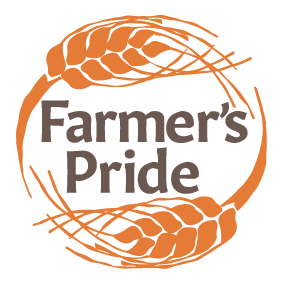This tool is for managers of protected areas in Europe wishing to find out which crop wild relatives (CWR) are likely to occur in the protected areas you manage. It has been created to promote the conservation of these highly important but often neglected wild plant species which are vital sources of diversity for the improvement of a wide range of crops of high socio-economic importance.
The tool has the following two main search functions:
- Species/Protected areas: Discover which CWR taxa occur in named protected areas.
- Species/Habitats: Discover which CWR are characteristic of European protected habitats, and in which protected areas those habitats are found.
The tool is a product of the Farmer’s Pride project, funded by the Horizon 2020 Programme of the European Union: farmerspride.eu/.
Note: The tool currently includes data for the EU 27 + UK only.
Instructions for using the tool
Select whether you wish to carry out a species/protected area search or a species/habitat search by selecting one of the green buttons at the top of the search form.
Use the white search fields to carry out searches based on one or more fields. Using more than one field facilitates a narrowing down of a search (e.g. to a specific CWR species, a country, or a protected area). Any combination of the three available fields can be included.
In the species/protected area search, select whether you want to see the results as a list or as a map by clicking the corresponding button. Finally, press the button Search to obtain the results.
In the list search results:
- Click on the information icon next to a CWR taxon to discover to which crop it is related and what its European (regional) Red List status is. In the pop-up box, click on the CWR name to discover taxonomic and nomenclatural information about the taxon in Euro+Med PlantBase (emplantbase.org/home.html), and on the Red List category to discover information about the taxon’s status in the IUCN Red List of Threatened Species (iucnredlist.org/).
- Click on the eye icon next to a CWR taxon (in a species/habitat search) to discover which protected areas are reported to contain the habitats in which a CWR taxon is characteristic.
- Hover over the leaf icon next to a named protected area to discover the number of recorded populations of a CWR taxon.
In the map search results:
- Click on each colored polygon in the map to obtain the name and code of the corresponding protected area.
| Results | |
| Brassica incana Ten. |
Crop wild relatives: Protected areasItaly:
IT5160013 - Isola di Pianosa - area terrestre e marina
|
The data behind the tool
CWR taxa – The CWR taxa included in the tool are limited to a subset in an inventory of priority European CWR that is based on three prioritization criteria: 1) the socio-economic value of the related crops; 2) the utilization potential of the CWR for crop improvement; 3) the threat status of the CWR. The inventory includes taxa related to human and animal food crops, and native and introduced taxa—although introduced taxa reported to be invasive in any of the European countries are excluded. For further information, see D1.2_In_situ_PGR_in_Europe_crop_wild_relatives.pdf, Sections 2.1.1 and 2.2.1, and Appendix A.
CWR population occurrences – The two main sources of population occurrence data for the priority CWR taxa are the Global Biodiversity Information Facility (GBIF – gbif.org) and Genesys (genesys-pgr.org/a). Downloaded data were edited following a rigorous process to remove all but the best quality data (for details, see D1.2_In_situ_PGR_in_Europe_crop_wild_relatives.pdf, Section 2.1.2.
Protected areas – The tool currently contains the protected areas of the Natura 2000 network (natura-2000-spatial-data/natura-2000-shapefile-1). This dataset contains Sites of Community Importance (SCI) designated under the Habitats Directive and Special Protection Areas (SPAs) designated under the Birds Directive. Other European protected areas (i.e. those included in the World Database on Protected Areas – www.protectedplanet.net/) will be added at a later date.
Habitats – protected habitats included in the Interpretation Manual of European Union Habitats (Int_Manual_EU28.pdf).
